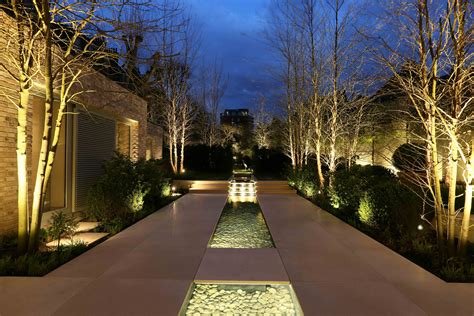The Role of Lighting in Garden Design
When it comes to designing a beautiful garden, many people focus on the plants and landscaping, but overlook the crucial element of lighting. Proper lighting can completely transform a garden, creating ambiance, highlighting features, and even providing safety and security. In this blog post, we will explore the important role that lighting plays in garden design, and discuss the various types of lighting fixtures available for gardens. We will also delve into the different techniques and options for using lighting to create visual effects, accentuate garden features, and illuminate pathways and walkways. Additionally, we will cover important considerations such as choosing the right color temperature for garden lighting, creating different lighting zones, and exploring energy-efficient and maintenance tips. By the end of this post, you will have a deeper understanding of how lighting can enhance the beauty and functionality of your garden.
Importance of proper lighting in garden design
Proper lighting in garden design plays a crucial role in enhancing the overall aesthetics and functionality of outdoor spaces.
First and foremost, proper lighting ensures that the garden is illuminated adequately, allowing you to comfortably use and enjoy the space even after the sun sets. This is especially important for those who enjoy hosting outdoor gatherings or simply relaxing in their garden in the evening.
Additionally, proper lighting can highlight the various elements of your garden, such as plants, trees, pathways, and architectural features, creating a visually appealing and inviting ambiance. This not only adds to the beauty of your outdoor space but also contributes to its safety and security, as well-lit areas are less prone to accidents and intruders.
Furthermore, proper lighting allows you to extend your living area outdoors, making the garden a more integral part of your home. Whether you want to create a cozy spot for reading, a romantic setting for dining al fresco, or a vibrant space for entertaining, the right lighting can help you achieve the desired atmosphere.
Types of lighting fixtures for gardens
When it comes to illuminating your garden, the right lighting fixtures play a crucial role in creating the perfect ambiance. One of the most popular types of lighting fixtures for gardens are path lights, which are designed to line pathways and highlight the edges of walkways. These lights come in various designs and shapes, such as traditional lantern-style or modern bollard lights.
Another essential lighting fixture for gardens is spotlights, which are used to highlight specific features or focal points in the garden, such as sculptures, trees, or architectural elements. Spotlights are available in different beam angles and can be adjusted to direct light precisely where it’s needed.
String lights are a versatile and decorative option for gardens, as they can be hung across trees, pergolas, or other outdoor structures to create a cozy and inviting atmosphere. These lights come in various lengths and colors, making them perfect for adding a festive touch to outdoor gatherings.
Floodlights are powerful fixtures that are ideal for illuminating large areas of the garden, such as the entire lawn or outdoor entertainment space. These lights are great for providing security and safety, as they can deter intruders and ensure visibility during nighttime activities.
Choosing the right color temperature for garden lighting
When it comes to garden lighting, the color temperature of the light bulbs plays a crucial role in setting the right ambiance. The color temperature of a light source is measured in Kelvin (K) and it determines whether the light appears warm or cool. For garden lighting, it is important to consider the color temperature to create the desired atmosphere.
Warmer color temperatures, such as 2700K to 3000K, create a cozy and inviting atmosphere in the garden, making it perfect for entertainment and relaxation. On the other hand, cooler color temperatures, around 4000K to 5000K, emit a brighter and more energizing light, which is suitable for task-oriented areas in the garden, such as pathways and work areas.
It is essential to select the right color temperature for different areas of the garden to achieve the desired mood and functionality. For example, using warmer color temperature for lounge areas and cooler color temperature for safety and security lighting can enhance the overall experience of the garden.
By understanding the impact of color temperature on garden lighting, homeowners and designers can make informed decisions to create a well-balanced and visually appealing outdoor space. Consideration of the color temperature can greatly influence the overall look and feel of the garden, making it a crucial factor in garden lighting design.
Using lighting to accentuate garden features
Proper lighting in a garden can truly transform its appearance and create a magical ambiance. Using the right lighting techniques can help bring out the best features of the garden and make it a stunning sight, especially at night.
One way to accentuate garden features is by using uplighting. This technique involves placing lights at the base of a tree, sculpture, or other garden feature to illuminate it from below. This creates a dramatic effect and draws attention to the focal point.
Another effective method is washing or grazing, which involves placing lights at a low angle to highlight a wall, fence, or other vertical elements in the garden. This technique can add depth and texture to the garden, creating a visually appealing look.
Additionally, silhouetting is a technique that involves placing lights behind an object to create a striking silhouette against a wall or other background. This can add a sense of mystery and drama to the garden, especially when used with architectural features or plantings.
Energy-efficient lighting options for gardens
When it comes to lighting up your garden, it’s important to consider energy-efficient options that not only save you money in the long run, but also have a minimal impact on the environment. One of the best options for energy-efficient garden lighting is LED (light-emitting diode) fixtures. LED lights use significantly less energy than traditional incandescent or fluorescent bulbs, making them a cost-effective choice for illuminating your outdoor space.
Another energy-efficient lighting option for gardens is solar-powered lights. These lights harness the power of the sun during the day and use it to provide illumination at night. By using solar-powered lights, you can reduce your reliance on traditional electricity sources and lower your carbon footprint.
In addition to LED and solar-powered lights, another energy-efficient option for garden lighting is using motion-sensing fixtures. These lights only turn on when they detect motion, which helps to conserve energy by only illuminating the area when it’s needed. This is a great option for areas of your garden that are not frequently used, such as the backyard or side yard.
Lastly, incorporating timers and dimmers into your garden lighting design can also help to conserve energy. Timers can be set to turn on and off your lights at specific times, reducing the amount of time they are in use. Dimmers allow you to adjust the brightness of your lights, so you can use just the right amount of light needed for a specific area of your garden.
Creating different lighting zones in the garden
When it comes to garden design, proper lighting is an essential element that can truly elevate the overall look and feel of your outdoor space. One effective way to enhance your garden with lighting is to create different lighting zones, each serving its own purpose and adding depth and ambiance to your garden.
One of the first steps in creating different lighting zones in your garden is to assess the layout of the space and determine the areas that would benefit from targeted lighting. This could include areas such as a dining or seating area, a water feature, a pathway, or specific garden beds.
Types of lighting fixtures that work well for creating different lighting zones in the garden include spotlights, ground lights, string lights, and wall-mounted lights. By strategically placing these fixtures, you can effectively highlight and define each designated zone in your garden.
Another important factor to consider when creating different lighting zones in the garden is the color temperature of the lights. Warm white lights can create a cozy and inviting atmosphere, perfect for a seating area, while cooler white lights can provide a more vibrant and energizing feel, ideal for pathways and entertaining spaces.
Utilizing different lighting techniques for visual effects
When it comes to creating a visually stunning garden, the use of different lighting techniques can make a significant impact. By strategically placing lights and using varying techniques, you can transform the look and feel of your outdoor space.
One effective way to utilize different lighting techniques for visual effects is to use uplighting. This technique involves placing lights at ground level, facing upward to illuminate trees, shrubs, or architectural features. Uplighting creates dramatic shadows and highlights that add depth and dimension to the garden.
Another popular technique is downlighting, which involves mounting lights in higher locations such as trees, pergolas, or the eaves of a building. This technique creates a soft, naturalistic glow that mimics moonlight, and can be used to gently illuminate pathways or seating areas within the garden.
For a more whimsical and playful effect, consider using color-changing LED lights. These lights can be programmed to change color, creating a dynamic and ever-changing atmosphere in the garden. They are particularly effective when used to highlight water features or to add a pop of color to plant beds.
Lighting pathways and walkways in the garden
Proper lighting is an essential aspect of garden design, and when it comes to pathways and walkways, it becomes even more crucial. Pathway lighting not only adds a touch of elegance to your garden but also enhances safety by illuminating potential hazards and guiding your way at night.
There are various lighting fixtures that can be used to illuminate pathways and walkways in the garden. From solar-powered lights to LED strip lights, the options are endless. Solar-powered lights are an excellent choice for outdoor pathways as they harness the power of the sun during the day and illuminate the pathway at night, without any additional energy costs.
When it comes to color temperature, it’s important to choose the right one for your garden lighting. For pathways and walkways, it’s best to go for a cooler color temperature (4000-6000K) as it provides better visibility and a sense of security.
It’s also important to consider lighting techniques while illuminating pathways and walkways. Using techniques such as uplighting and downlighting can create dramatic effects and highlight the beauty of your garden at night.
Safety and security considerations for garden lighting
When it comes to garden lighting, safety and security should be top priorities. Ensuring that your garden is well-lit can help deter intruders and provide a safe environment for you and your family.
One important consideration is the placement of the lighting fixtures. It’s crucial to strategically place lights in areas that could potentially be targeted by intruders, such as entry points, windows, and dark corners. This will not only improve visibility but also make it easier for you to monitor the property.
Another key factor to consider is the type of lighting being used. Opt for fixtures that have built-in motion sensors or timers, as these can help alert you to any unusual activity. Additionally, using bright LED lights can help create a sense of security and highlight any suspicious movement.
Lastly, regular maintenance of your garden lighting system is essential for ensuring its effectiveness and longevity. Keep an eye out for any damaged or burnt-out bulbs, clean the fixtures regularly, and ensure that the wiring is secure and properly insulated to prevent any hazards.
Maintenance tips for garden lighting systems
Proper maintenance is key to ensuring that your garden lighting system continues to function effectively. Regularly check for any loose or damaged wiring, as this can pose a safety hazard and affect the performance of your lights. Make sure to clean the fixtures and lenses to remove any dirt or debris that may have accumulated over time, as this can diminish the brightness and clarity of the light. Additionally, it’s important to inspect the power source and connections to ensure that everything is secure and functioning properly.
Another important maintenance tip is to trim any overgrown vegetation around the lighting fixtures. Plants and trees can quickly encroach on the lights, blocking the illumination and potentially causing damage to the fixtures. By keeping the surrounding vegetation in check, you can maintain the effectiveness and longevity of your garden lighting system.
Throughout the year, it’s also a good idea to periodically adjust the positioning and angle of your light fixtures. This will help ensure that the lighting is directed where it’s needed most and can highlight your garden features effectively. Furthermore, be sure to replace any burnt-out bulbs promptly to maintain optimal brightness and prevent any undue strain on the system.
Lastly, consider scheduling regular professional maintenance to assess the overall condition of your garden lighting system and address any potential issues before they escalate. A professional can provide valuable insights and recommendations for long-term care, helping to extend the lifespan of your lighting system and keep your garden looking its best.
Frequently Asked Questions
Why is proper lighting important in garden design?
Proper lighting in garden design is important for safety, security, and enhancing the beauty of the garden. It also extends the use of outdoor space into the evening.
What are some types of lighting fixtures suitable for gardens?
Some types of lighting fixtures suitable for gardens include pathway lights, spotlights, string lights, bollard lights, and wall-mounted lights.
How do you choose the right color temperature for garden lighting?
The right color temperature for garden lighting depends on the desired ambiance. Warm white (2700-3000K) creates a cozy atmosphere, while cool white (5000-6500K) is more suitable for task or security lighting.
How can lighting be used to accentuate garden features?
Lighting can be used to highlight special plants, trees, sculptures, or architectural elements in the garden, creating focal points and visual interest.
What are some energy-efficient lighting options for gardens?
Energy-efficient lighting options for gardens include LED fixtures, solar-powered lights, and low-voltage systems. These options help reduce energy consumption and lower electricity costs.
How can different lighting techniques be used for visual effects in the garden?
Different lighting techniques like uplighting, downlighting, moonlighting, and cross-lighting can create dramatic effects, add depth, and evoke different moods in the garden.
What are some safety and security considerations for garden lighting?
When planning garden lighting, it’s important to ensure that pathways and stairs are well-lit to prevent accidents. Security lighting should be strategically placed to deter intruders and enhance overall safety.
What maintenance tips should be followed for garden lighting systems?
Regularly clean fixtures, replace bulbs as needed, check wiring for any damage, and trim vegetation that may obstruct light output. It’s also important to inspect the system for water damage and make necessary repairs.






